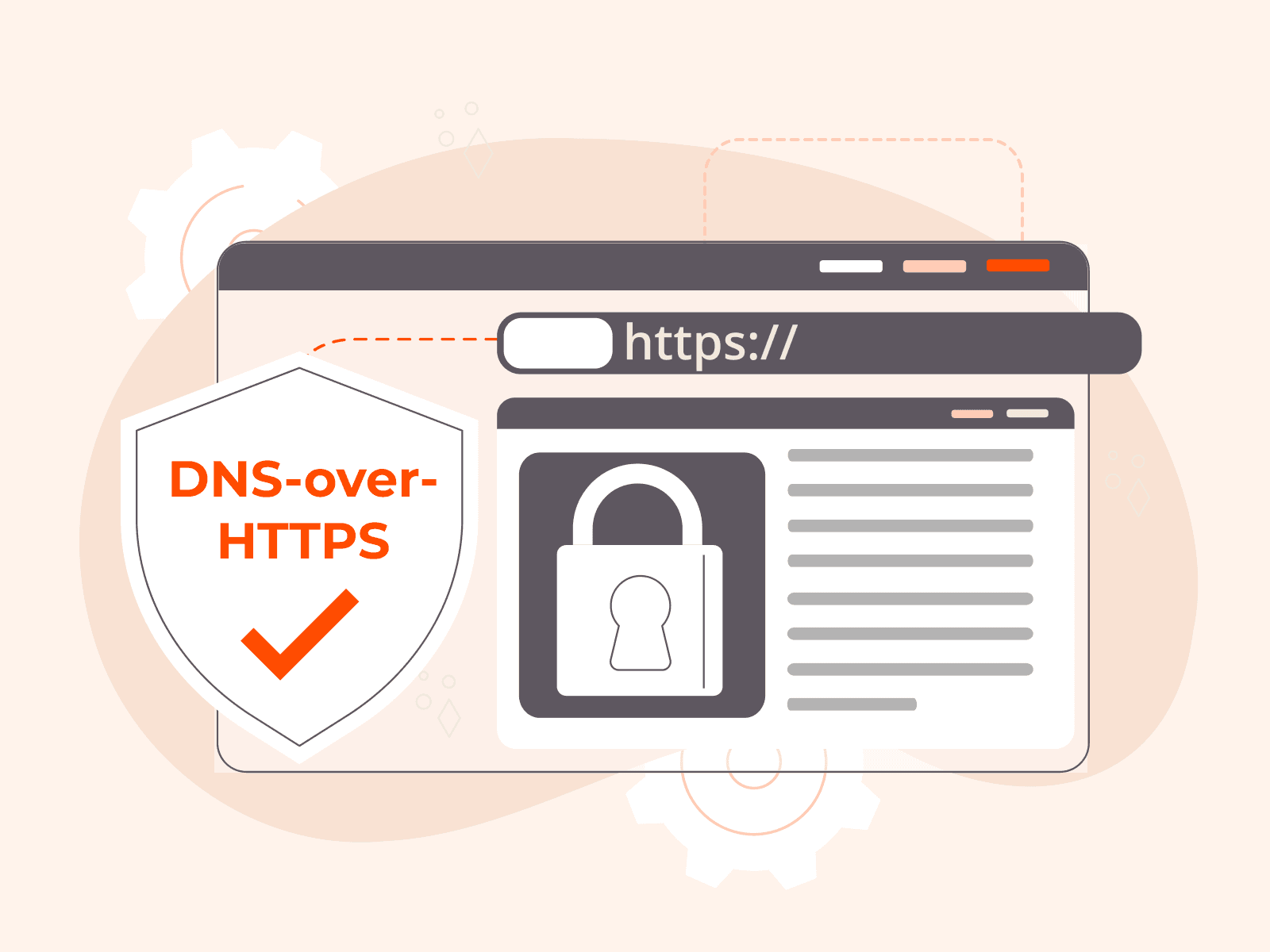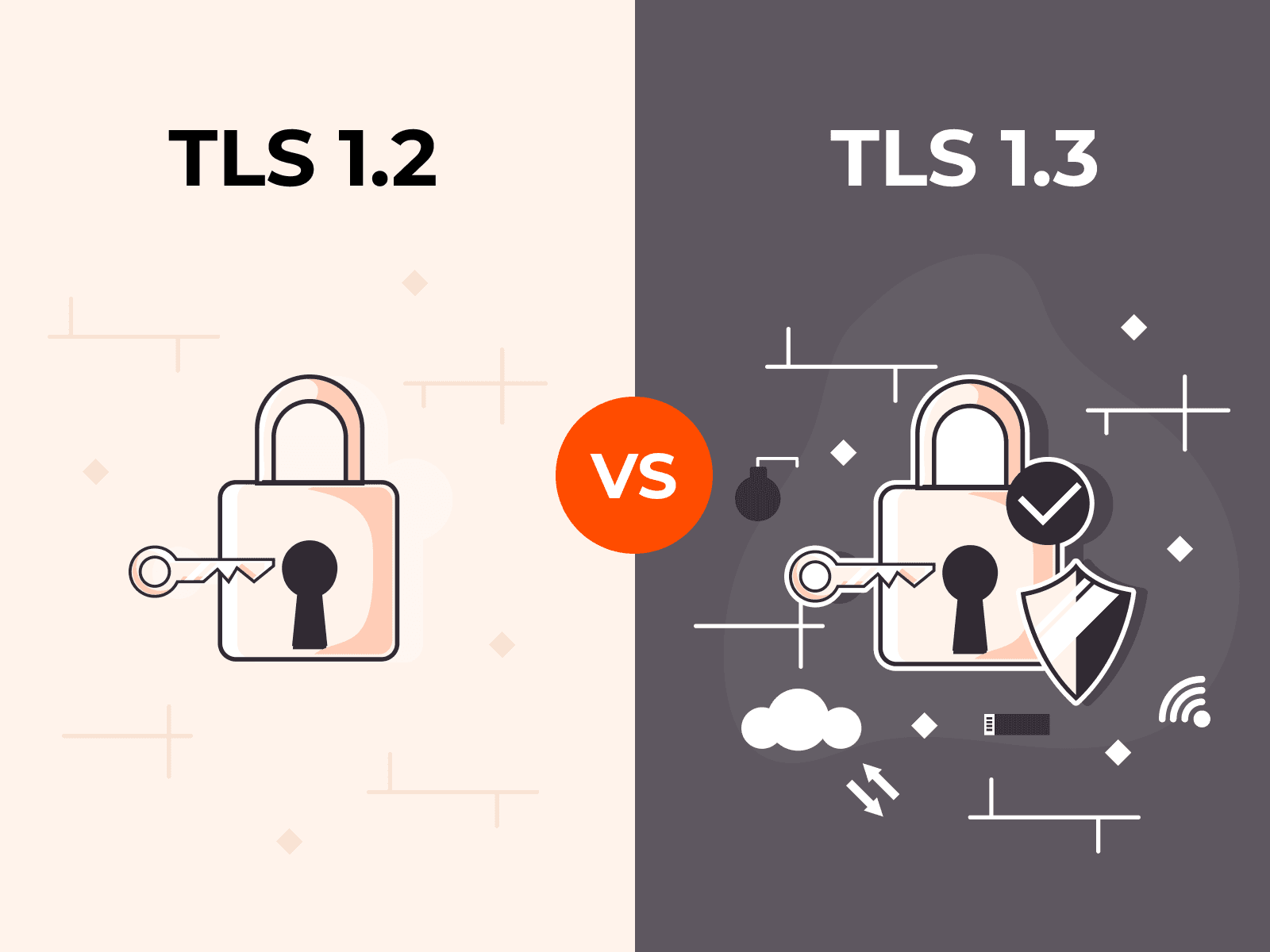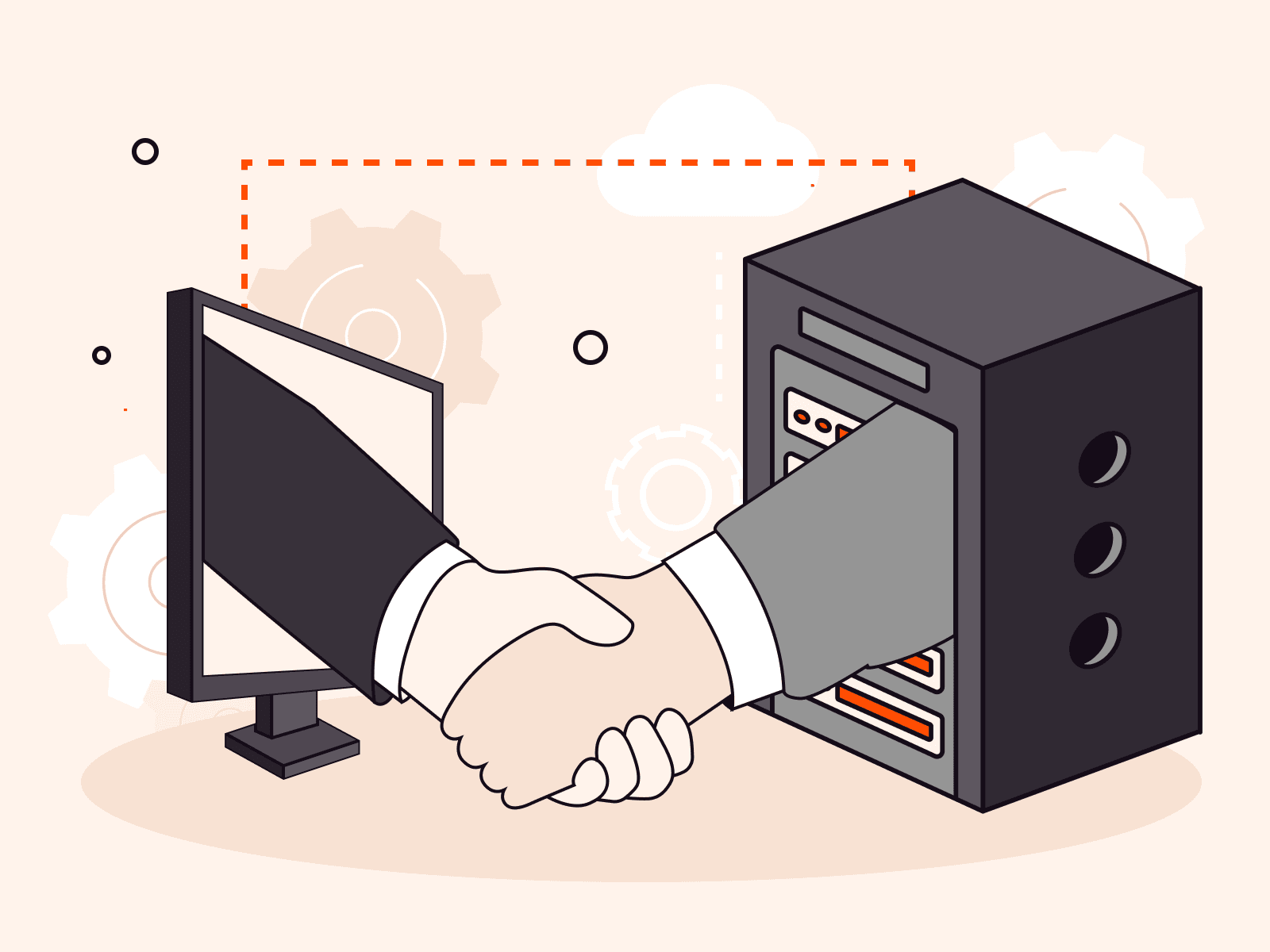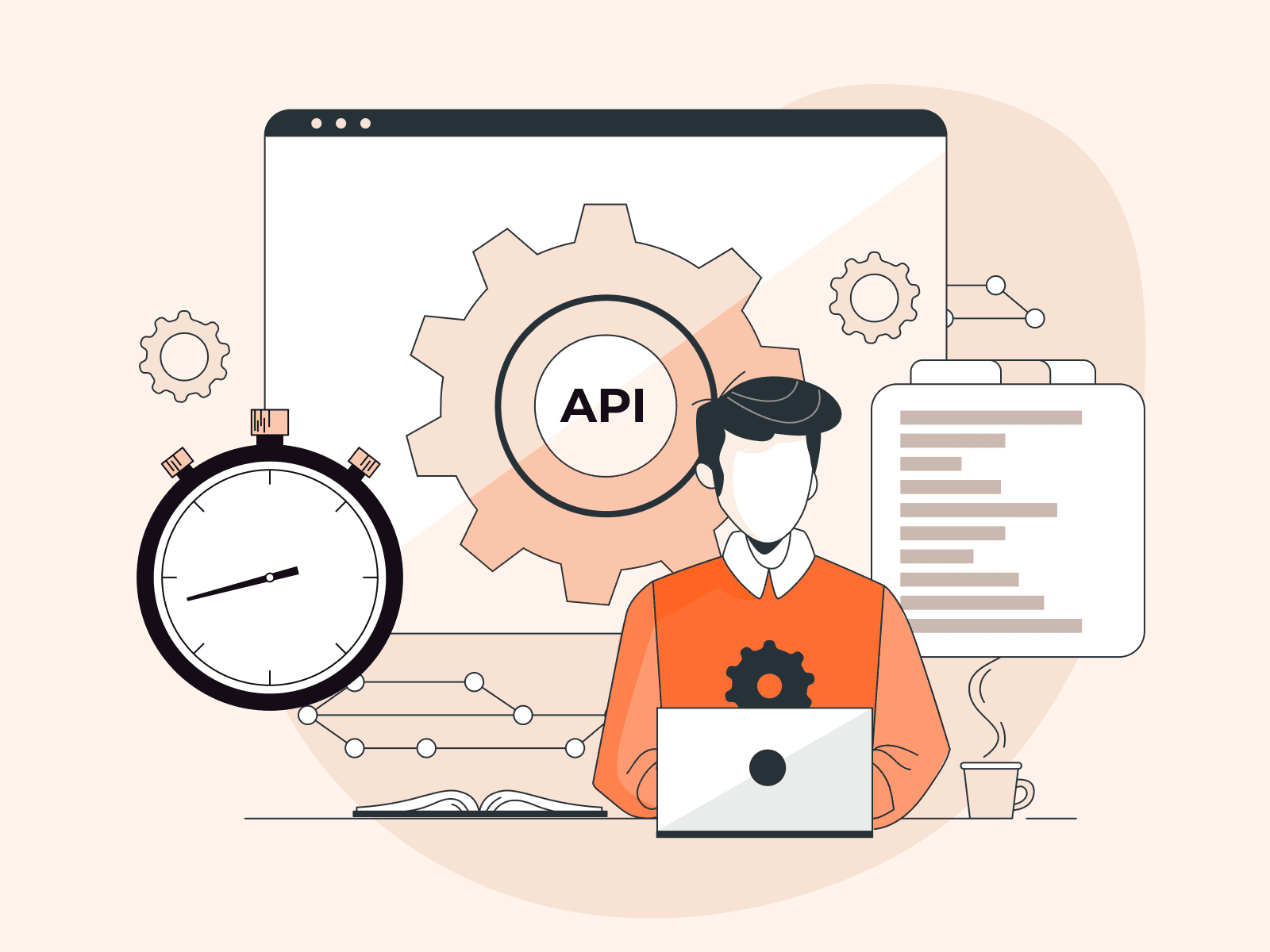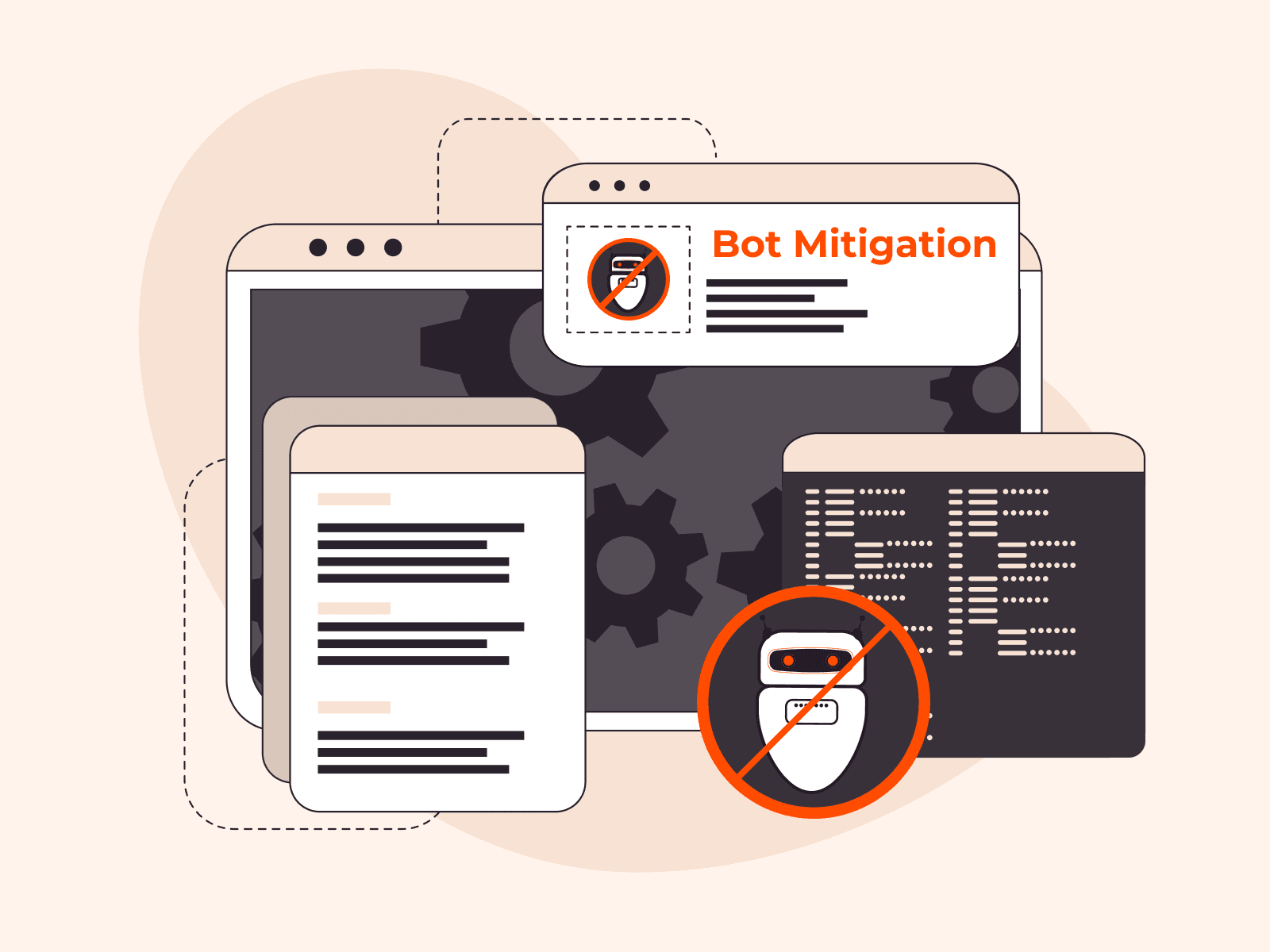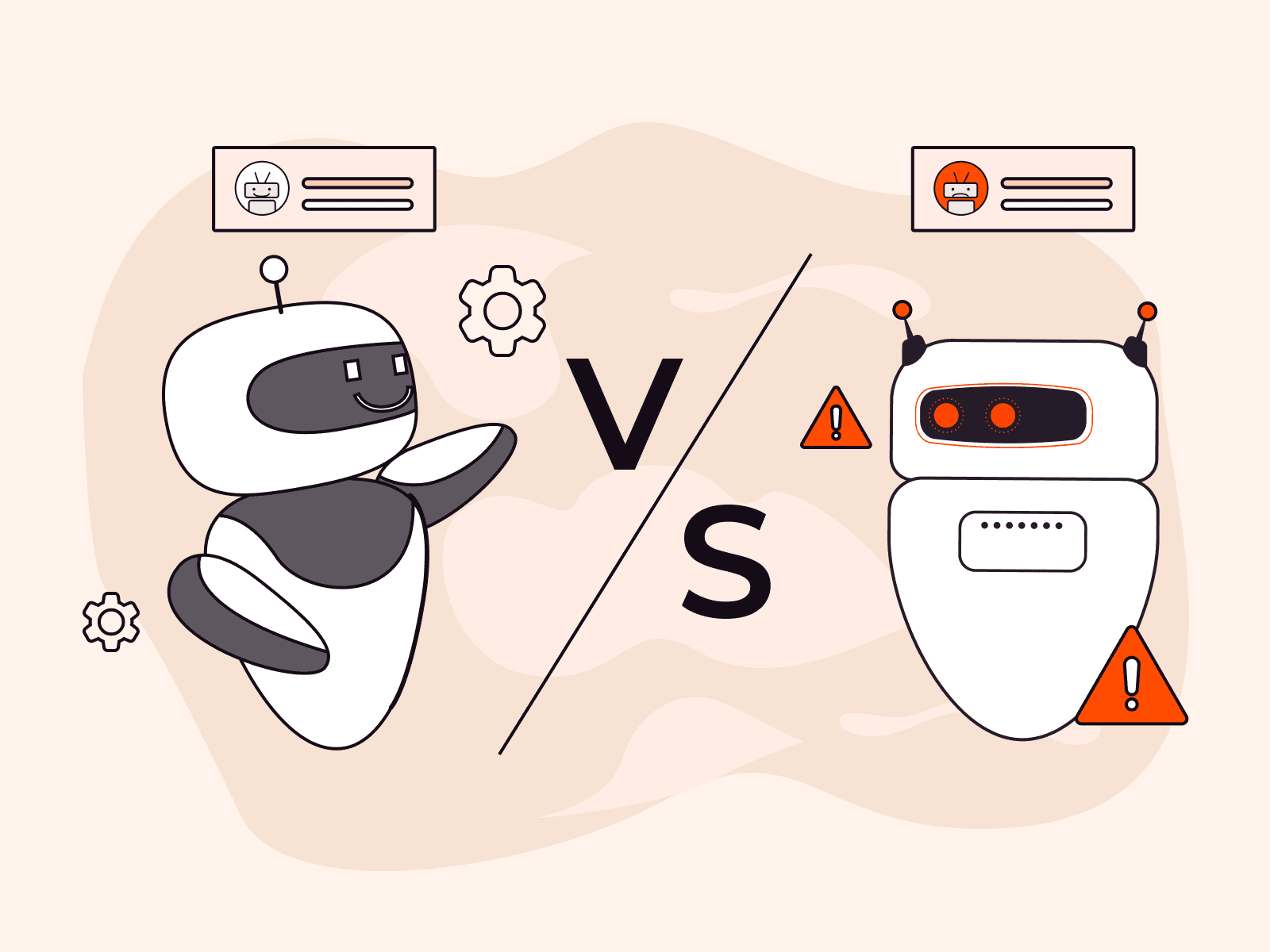Data breaches are alarming incidents where unauthorized access to sensitive data jeopardizes the confidentiality, integrity, and availability of information. They’ve become increasingly common, affecting organizations across the globe. A data breach should be avoided at all costs, and in the event that one occurs it requires swift and thorough mitigation to avoid serious negative consequences. This article explores data breach causes, common types, and repercussions for businesses. We will also outline proactive measures for prevention and effective strategies for mitigation, equipping you with the knowledge you need to protect your organization against this type of cybercrime.
What Is a Data Breach?
A data breach occurs when unauthorized access is gained to confidential information, either through accidental disclosure or deliberate theft. The exposed data often comprises sensitive details like financial records, personal health information, intellectual property, or login credentials, posing significant risks to businesses and their customers.
Businesses must take data security seriously or face legal and financial consequences. Regulations such as the GDPR in Europe and various state-level standards in the US set strict rules for protecting data. Data breaches caused by non-compliance with these regulations can result in substantial fines, as seen in the case of Amazon facing an $886 million penalty for failing to seek consent before using customers’ personal information. Other associated fees include PR and attorney fees, and fallouts from operational disruption.
But data breaches cost companies more than money; they undermine consumer confidence in a business’s ability to protect their sensitive information. As a result, many consumers stop engaging with a brand after a breach, ruining its reputation.
Why Data Breaches Happen

There are several main reasons that data breaches happen, with attackers using a diverse range of methods to seize personal information.
- Loss or theft: If lost, an unencrypted phone, laptop, or drive can be a treasure trove for cybercriminals. Even locked devices may fall prey to sophisticated hacking techniques, opening the door for stored data to be breached.
- Human error and social engineering: Employees might inadvertently expose data by misplacing it, sending it to the wrong recipient, or not securing it properly. Such incidents, though accidental, result in unauthorized data access.
- Insider attacks: Individuals within an organization may intentionally leak data to inflict harm, or benefit financially or personally, by passing information to competitors or hackers. In one case, an employee breached internal systems to give fellow employees paid vacations.
Outsider attacks: Cybercriminals outside an organization target vulnerabilities in its security defenses to gain unauthorized access to sensitive information. These attackers can bypass security measures to steal data for fraudulent purposes or sell it on the dark web through a variety of methods, such as the following:
- Hacking: Hackers find and use weak spots in software or networks to get in and take data without permission. They often look for systems that haven’t been updated with the latest security patches, using their technical skills to bypass security. In 2022, Slack’s GitHub account was reportedly hacked; an attacker stole employee tokens and used them to access company data, turning the hack into a data breach.
Phishing: Here, cybercriminals send fake messages that look like they’re from legitimate sources, such as a well-known parcel delivery service. They then ask recipients to fill in their details and click on a link to track a non-existent package. When the link is clicked, it installs spyware that captures passwords and personal data. This is exactly what happened in 2023 when a Mailchimp employee was tricked into sharing their credentials.
- Malware: Often combined with social engineering or phishing, this method involves tricking someone into installing malware disguised as desirable software. Once installed, this software can take control of the victim’s device, steal sensitive information, and potentially compromise other connected systems, as in a most recent password-stealing malware that spread fake job listings on Facebook in February 2024 in an attempt to gain account credentials. The hacker can also demand payment to unlock them, a tactic known as ransomware, instead of immediately breaching the data.
- DDoS (distributed denial-of-service attack): Unlike other methods that aim to steal data, DDoS attacks can be launched by a group of cybercriminals. The DDoS attack makes data theft difficult or impossible to detect. Rumor has it that the 2020 New Zealand Stock Exchange DDoS attacks were merely a cover for more nefarious cybercrime involving data breaches. Additionally, DDoS attacks can contribute to data breaches indirectly in multiple ways:
- Reduced security focus: During a DDoS attack, security teams are overwhelmed by the surge in traffic, potentially neglecting other security measures that could prevent a data breach.Exploiting vulnerabilities: A DDoS attack might be used to probe a system’s defenses and identify weaknesses that could then be exploited for a data breach.
- Compromised devices: In some cases, the very devices used in a DDoS attack (like hijacked IoT devices) might also be vulnerable to further exploitation, creating a potential entry point for attackers to steal data.
The most common thread tying all these reasons and methods together is security weaknesses.
Which Types of Data Are Commonly Breached?
Cybercriminals use these data breach methods to access and steal different kinds of sensitive information. They target high-value information for financial gain through selling this data on the black market, or cause direct harm to individuals or organizations by using the stolen information for identity theft or fraud.
Financial Information
Attackers commonly seek to steal bank account details and credit card numbers. One example is the Equifax breach in 2017, where attackers exploited outdated third-party software to expose the financial data of over 153 million individuals. This breach not only led to financial losses for those affected but also damaged their credit standings.
Personal Information
Identity theft breaches focus on personal information, such as names and social security numbers, allowing criminals to assume another person’s identity. The massive Yahoo breach affected up to 1.5 billion accounts in 2013, with hackers stealing email addresses and security questions, opening the door to fraudulent activities under the victims’ names.
Health Information
Unauthorized access to medical histories and insurance information reached new heights in 2023 with 133 million records exposed through 26 breaches. Among these, the largest breach impacted over 11 million individuals, marking it as the second-largest healthcare data breach ever recorded.
Intellectual Property
Another type of data targeted in breaches is intellectual property, which includes patents, trade secrets, blueprints, customer lists, and contracts. The theft of such sensitive information undermines innovation and can give competitors an unfair advantage, disrupting market dynamics and potentially leading to a drop in stock prices.
How to Prevent Data Breaches
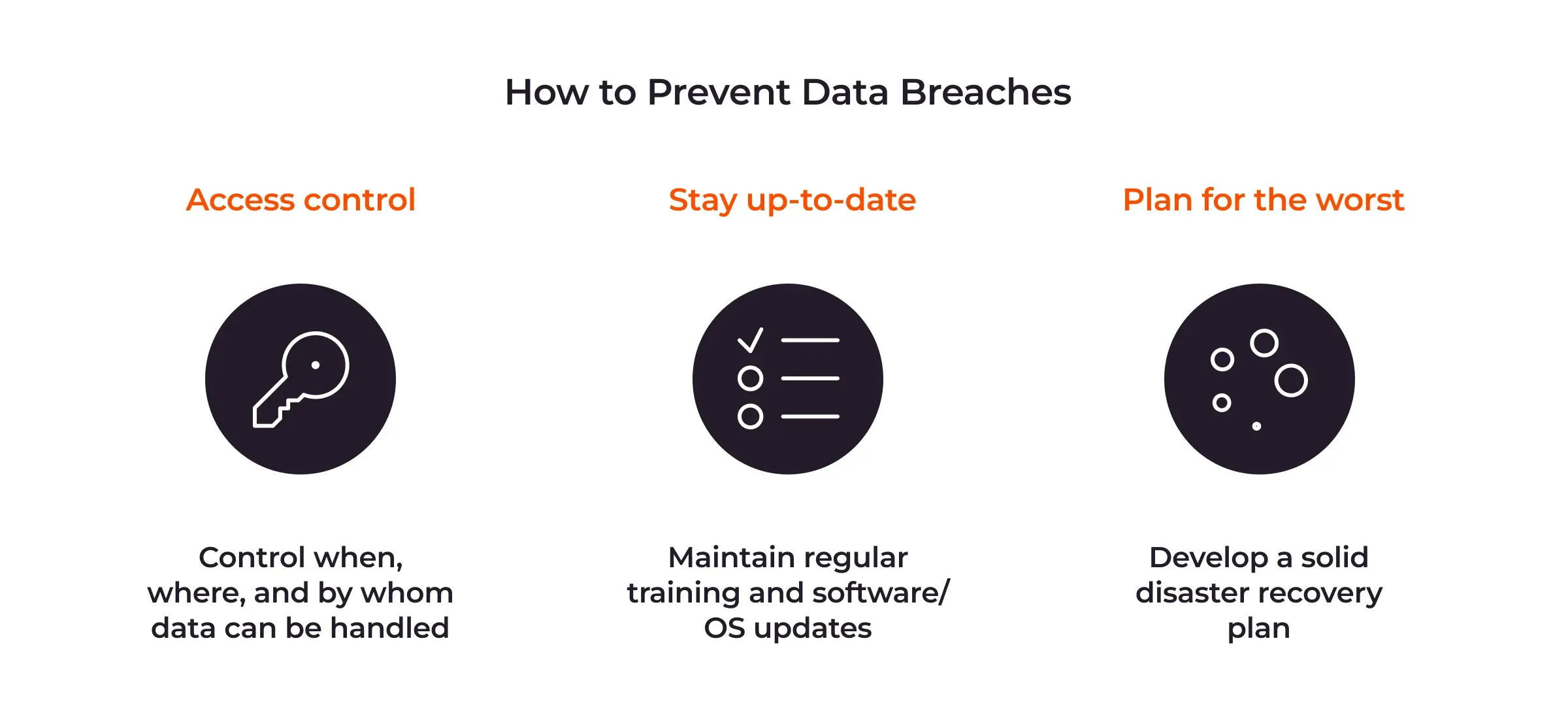
Preventing data breaches is proactive; prevention focuses on stopping breaches before they happen, unlike reactive measures that address or mitigate the issue after a breach occurs (more on that later.) Prevention starts with a strong awareness of baseline security measures that are required for protecting sensitive information.
Let’s review some best practices, categorized by data breach type.
Protect Against Potential Loss or Theft
Proactively safeguard your data in case a loss or theft occurs, by encrypting your data. Encryption scrambles information, making it unreadable without a special key. Encrypt data on laptops, desktops, and mobile devices using built-in security features or third-party encryption software to turn your sensitive information into a code that only someone with the correct key can unlock. This way, even if stolen, your data remains useless to thieves.
It’s also recommended to use strong, unique passwords and multi-factor authentication (MFA) for all user accounts. MFA requires a second verification code, like a text message or fingerprint scan, to access accounts. This makes stolen passwords less valuable to attackers.
Other potentially powerful additions to your security are user behavior analytics (UBA) and traffic analysis capabilities. Empowered by AI, your security system will then be capable of pinpointing malicious traffic and distinguishing legitimate traffic, such as search engine, copyright, and site monitoring bots, from malicious botnet activity.
Preempt Human Error
Within organizations, regular security awareness training equips employees to identify phishing attempts (fake emails or websites designed to steal information). Training also teaches them to avoid suspicious links and attachments and handle sensitive information with care. Individuals can also find online courses to help them spot suspicious activity before they click on a dangerous link, download crippling malware, or unintentionally share sensitive information with unauthorized people.
Establishing and enforcing clear policies for secure data sharing and storage can also significantly reduce the chances of accidental data exposure. Organizations should only grant access to data based on the “need-to-know” principle, meaning only those whose roles specifically require it should have access.
Prevent Malicious Insider or Outsider Attacks
Now that you’ve protected against loss and theft, and have implemented training to preempt human error, here are additional steps you should take to prevent malicious attacks, led by your IT Security team:
- Patch your software regularly: Software updates often include security patches that fix vulnerabilities that hackers were previously able to exploit. Updating all software and operating systems promptly closes these security gaps and strengthens your defenses. Perform penetration testing to determine the need for patches.
- Deploy firewalls, IDS, and encryption: Firewalls like Gcore WAAP act as a barrier between your network and the internet, blocking unauthorized access attempts. Intrusion Detection Systems (IDS) monitor your network for suspicious activity, like attempted breaches. Encryption adds an extra layer of protection, making stolen data unreadable.
- Regularly back up your data to a secure location: Routinely save copies of your data to an external hard drive, cloud service, or another secure off-site storage to ensure that a duplicate exists. This allows you to restore critical information in case of a breach or other disaster.
- Operate according to a zero-trust model: Enable and teach employees to adopt a zero-trust model, which assumes no user or device is inherently trustworthy and requires verification for all access attempts. This extra layer of caution helps prevent unauthorized access, even if an employee is tricked.
- Develop and test a disaster recovery plan: Outline steps to mitigate a security incident and resume operations quickly.
- Train your staff: Regularly train employees on best practices for data security and the importance of protecting sensitive information. This includes awareness about phishing, proper data handling, and secure device use.
How to Mitigate Data Breaches
While prevention is ideal, even the most secure systems can be subject to human error and breach. Here’s a quick response guide to minimize damage if a breach occurs:
- Detect: Implement a robust software detection system to monitor for signs of illicit access or suspicious activities, such as unusual login attempts or surprise data movements. Gcore WAAP actively scans incoming traffic in real time, ensuring swift detection of potential breach attempts. Security Information and Event Management (SIEM) systems can also become a powerful addition to your security posture.
- Contain: Once a breach is detected, the top priority is to contain it and prevent further damage. WAAP automatically blocks and isolates data identified as part of a zero-day or OWASP list of attacks, as well as a custom policies list. It is capable of detecting malicious traffic and evasive bots, minimizing the risk of unauthorized access.
- Eradicate: With the breach contained, IT team members must eliminate the underlying security weakness by removing malware, closing unauthorized access points, and patching vulnerabilities.
- Report and recover: Have your IT team communicate the breach to affected parties and develop a recovery plan that includes restoring lost data and updating your policies to reflect lessons learned. Work with Gcore’s security experts to develop a protection plan to avoid future breaches, you can book a free demo and get started today.
Conclusion
Data breaches can be devastating, but they’re preventable. Distinguishing between accidental and malicious data breaches and the methods used to execute them can help you develop a layered defense strategy that enhances your organization’s security posture and keeps personal, financial, and other customer data in your rightful hands.
Looking for a comprehensive data security solution to help prevent data breaches? Gcore WAAP protects against all types of hacks, from zero-day to those on the OWASP list, that can lead to hacking and data compromise. As a result, WAAP helps ensure your business is safe from data breaches, protecting your organizational reputation and your bottom line.
Related articles
Subscribe to our newsletter
Get the latest industry trends, exclusive insights, and Gcore updates delivered straight to your inbox.

